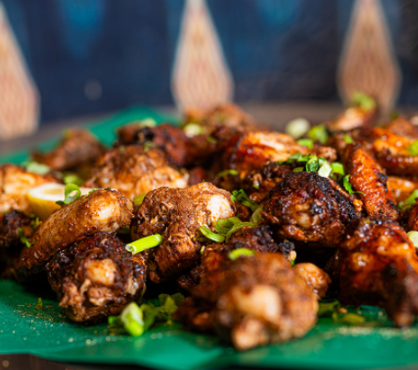India’s food is as varied as its culture, with a wide range of flavors and cooking styles. Traditional Indian recipes have been passed down from generation to generation, from the streets of Delhi to the kitchens of Kerala. Each region has its own special ingredients and ways of cooking. In the last few years, old and new have come together to create modern Indian food, which combines traditional flavors with new ideas. This essay looks at how these two different but related culinary realms have changed throughout time.
The Heart of Indian Cuisine: Traditional Indian Dishes
Traditional Indian dishes is very related to the USA’s tradition and records. Indian food is a massive component of everyday lifestyles for its people. It has lots of extraordinary flavors and scents. Traditional foods are a mirrored image of the different climates and farming techniques in every region. For instance, the well-known biryani from Hyderabad and the easy dal tadka from Punjab.
Spices are a crucial a part of conventional Indian food. Each one is cautiously selected and combined to make certain that every chew tastes properly. Some of the most critical spices that give butter fowl, samosas, and dosas their precise flavor encompass garam masala, turmeric, cumin, coriander, and cardamom. Ghee, or clarified butter, is likewise an critical part of many traditional recipes because it adds richness and taste.
The Impact of Modern Indian Cuisine: A New Look at Old Flavors
Modern Indian cuisine is a changing version of its traditional roots. Modern Indian food uses new techniques, products from all over the world, and inventive presentations, yet it still honors the basics of Indian cooking. Fusion cuisine is something that chefs are trying out these days. They connect the past with the present.
Molecular gastronomy is one of the most interesting new trends in Indian food. Chefs are now adopting scientific methods to change the textures and flavors of their foods, which makes them look amazing and taste great in a whole new way. You might discover a traditional meal like paneer tikka, but it might be served as an espuma (foam) or in a deconstructed way, which gives it a modern spin.
The Art of Fusion: Where Old and New Come Together
Combining antique Indian recipes with new cooking methods suggests how flexible and timeless Indian meals is. Food that used to only be served in rural kitchens is now served in fancy eating places everywhere in the global. The mixture of Indian spices with Western ingredients, inclusive of curry-flavored pizza or masala-infused burgers, is an excellent instance of how traditional Indian foods have modified to attraction to a cutting-edge, international target market.
At the same time, cooks are arising with new ways to prepare dinner traditional Indian food like butter chicken and mutton rogan josh, which includes sous vide and pressure cooking. These strategies not only make the meals cook faster, however additionally they make the tastes more potent, which makes the dishes lighter without losing taste.
New ideas in modern Indian food that are good for your health
As more individuals become aware of their health and well-being, modern Indian food has changed to offer healthier options that still taste good. Many traditional Indian meals use ghee and rich oils, but modern Indian cooks are coming up with new ways to cut down on fat and calories by utilizing things like olive oil, avocado, and coconut milk instead of traditional fats.
Modern Indian food is also putting more and more focus on vegetarian and plant-based diets. To attraction to health-aware clients, traditional vegetarian recipes like chana masala and aloo gobi are being reinterpreted with easy materials and cooking techniques.
Conclusion
There is some element for each person to experience, whether or not or now not you want the wealthy, aromatic aromas of conventional Indian meals or the current day dishes that modern-day Indian delicacies have to provide. Indian food is cute due to the reality it could alternate with the instances whilst nonetheless last right to centuries-antique cooking traditions. Chefs may additionally moreover deliver diners a sincerely unique culinary experience through blending the time-commemorated talents of traditional Indian delicacies with the creativity and invention of modern-day cooking. Each dish conveys a tale approximately India’s wealthy cultural information and appears ahead to the future of global cuisine.
Conclusion
The trade in Indian food is a party of each the past and the destiny. Indian food has been around for a long time, and modern Indian delicacies opens up new and charming options for food enthusiasts all around the international. Curryleavesindiancuisine.com has the high-quality of both worlds: conventional flavors and present-day tweaks that make Indian meals flavor even higher.
